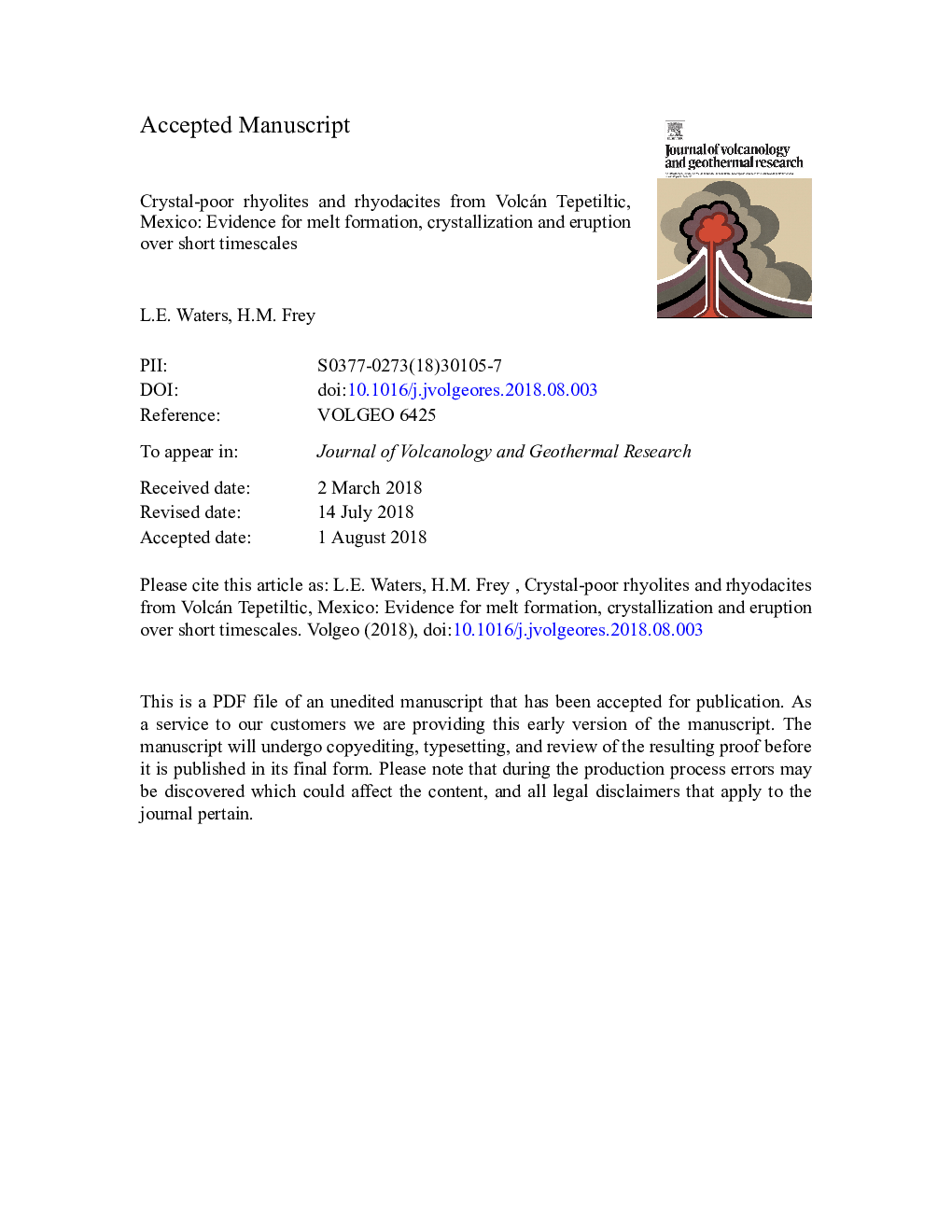| کد مقاله | کد نشریه | سال انتشار | مقاله انگلیسی | نسخه تمام متن |
|---|---|---|---|---|
| 8959599 | 1646330 | 2018 | 50 صفحه PDF | دانلود رایگان |
عنوان انگلیسی مقاله ISI
Crystal-poor rhyolites and rhyodacites from Volcán Tepetiltic, Mexico: Evidence for melt formation, crystallization and eruption over short timescales
دانلود مقاله + سفارش ترجمه
دانلود مقاله ISI انگلیسی
رایگان برای ایرانیان
موضوعات مرتبط
مهندسی و علوم پایه
علوم زمین و سیارات
ژئوشیمی و پترولوژی
پیش نمایش صفحه اول مقاله

چکیده انگلیسی
A detailed petrologic study is presented for six rhyolite and rhyodacite pumices that erupted from Volcán Tepetiltic in Western Mexico to determine the pre-eruptive conditions of the magma reservoir, as the volcano exited a ~180â¯kya hiatus of activity. Rhyolite pumices are crystal poor (â¤6.7%) and minimally saturated in seven mineral phases (plagioclaseâ¯+â¯titanomagnetiteâ¯+â¯ilmeniteâ¯+â¯apatiteâ¯Â±â¯quartzâ¯Â±â¯orthopyroxeneâ¯Â±â¯clinopyroxeneâ¯Â±â¯hornblendeâ¯Â±â¯zircon). In all samples, plagioclase is the most abundant phenocryst phase and spans a range of composition of ~20-30â¯mol% An in each sample. Pre-eruptive temperatures, determined from two Fe-Ti oxide geo-thermometry, range from 703 to 857â¯Â°C. Maximum pre-eruptive H2O contents, determined from plagioclase hygrometry, range from 5.0-8.9â¯wt%, where the most calcic plagioclase compositions correspond to the highest water contents. Comparison of compositions, textures, and Sr and Ba concentrations in plagioclase are used to determine phenocrysts from xenocrysts through comparison with experiments; xenocrysts are identified in one sample (COMP-48). Comparison of plagioclase abundances, textures and sizes with those grown in the run products of experiments from the literature reveals that (1) the pumices were all likely super-heated prior to crystallization, (2) they experienced a low degree of undercooling induced by either degassing or cooling, and (3) four of the pumices (those with <1.5% plagioclase) did not reach an equilibrium abundance of plagioclase, which constrains the amount of time spent beneath the plagioclase-in curve to less than ten days. Collectively, the data suggests that the crystal-poor pumices were partial melts, generated by an influx of basaltic andesite, that experienced super-liquidus conditions, followed by crystallization and eruption on a time-scale of weeks.
ناشر
Database: Elsevier - ScienceDirect (ساینس دایرکت)
Journal: Journal of Volcanology and Geothermal Research - Volume 361, 15 July 2018, Pages 36-50
Journal: Journal of Volcanology and Geothermal Research - Volume 361, 15 July 2018, Pages 36-50
نویسندگان
L.E. Waters, H.M. Frey,